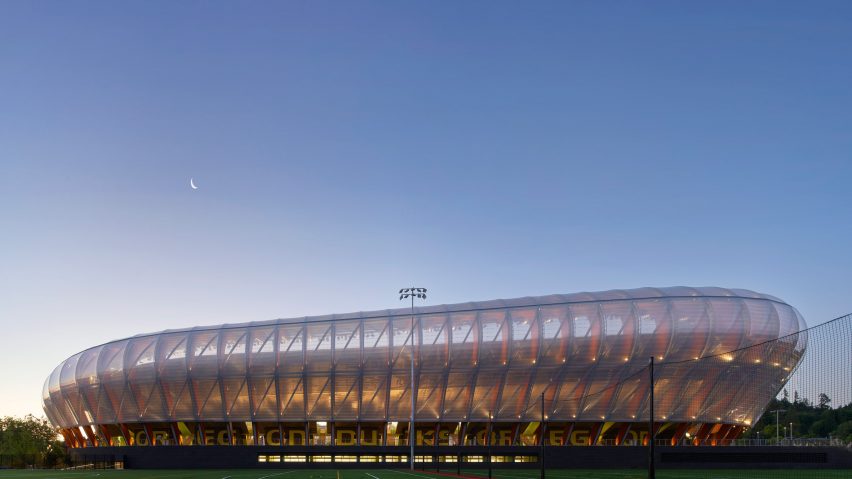
Dezeen's top nine mass-timber buildings of 2022
With mass timber becoming an increasingly mainstream building material, we continue our review of the year by looking at nine of the most interesting cross-laminated timber and glued laminated timber buildings of 2022.
This year has seen cross-laminated timber (CLT) and glued laminated timber (glulam) used to create buildings that vary dramatically in scale as well as in form, from an angular residential tower to a tubular holiday home.
Read on for Dezeen's top nine mass-timber buildings of the year:
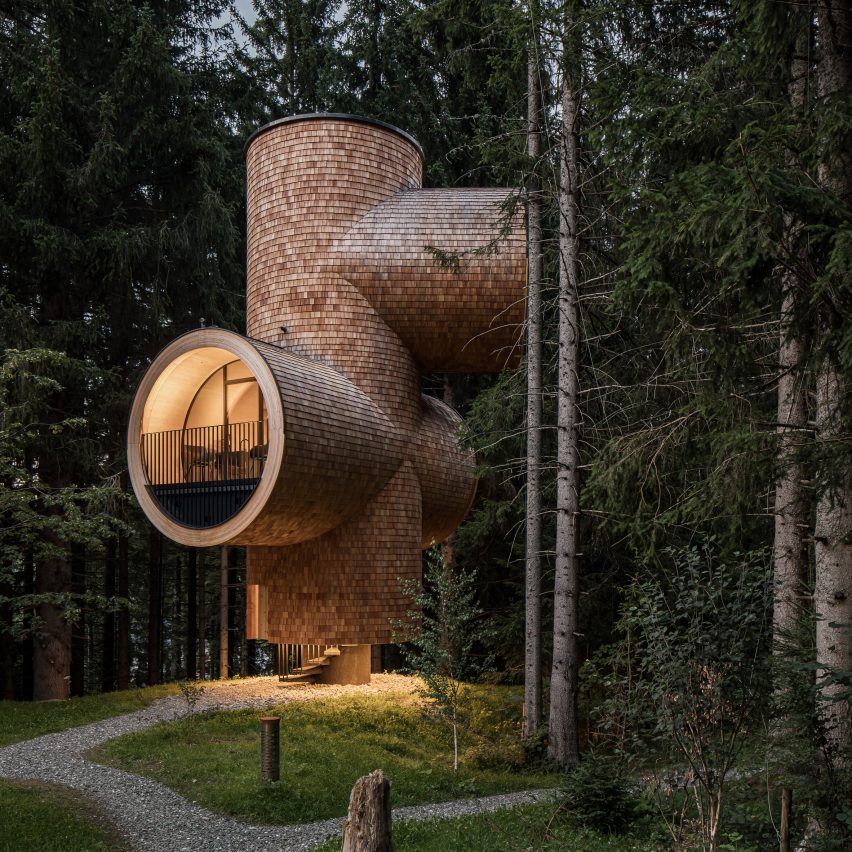
One of the year's most unusually shaped buildings, the tubular Bert dwellings were informed by cartoon characters. Four of the rounded structures were built as guest accommodation at the Steirereck am Pogusch restaurant in the rural village of Pogusch.
Each of the buildings, which are covered in shingles and feature large round windows, were constructed from prefabricated components made from bent cross-laminated timber. The factory-made components were then assembled on site.
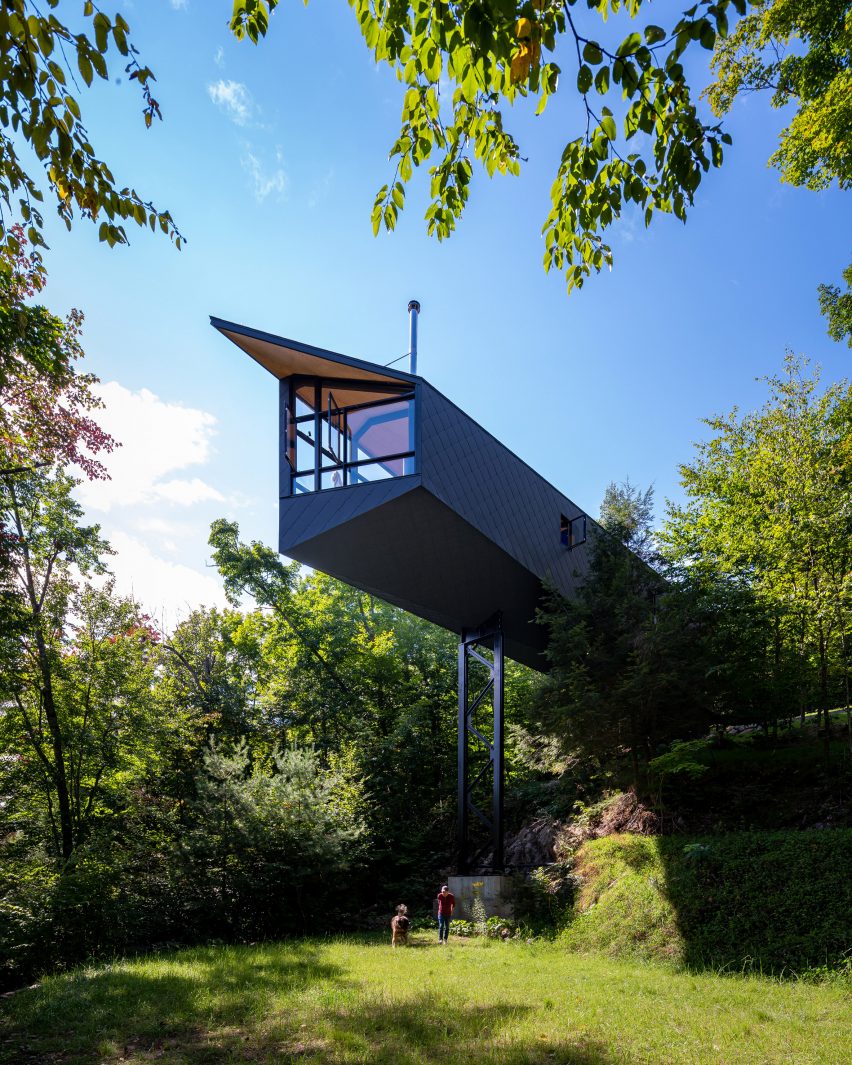
MORE Cabin, Canada, by Kariouk Architects
This dramatic, cantilevered holiday home was designed by Kariouk Architects to stand out from its natural surroundings overlooking a lake in Québec.
The cabin was constructed from a combination of glulam beams, CLT panels and additional steel supports.
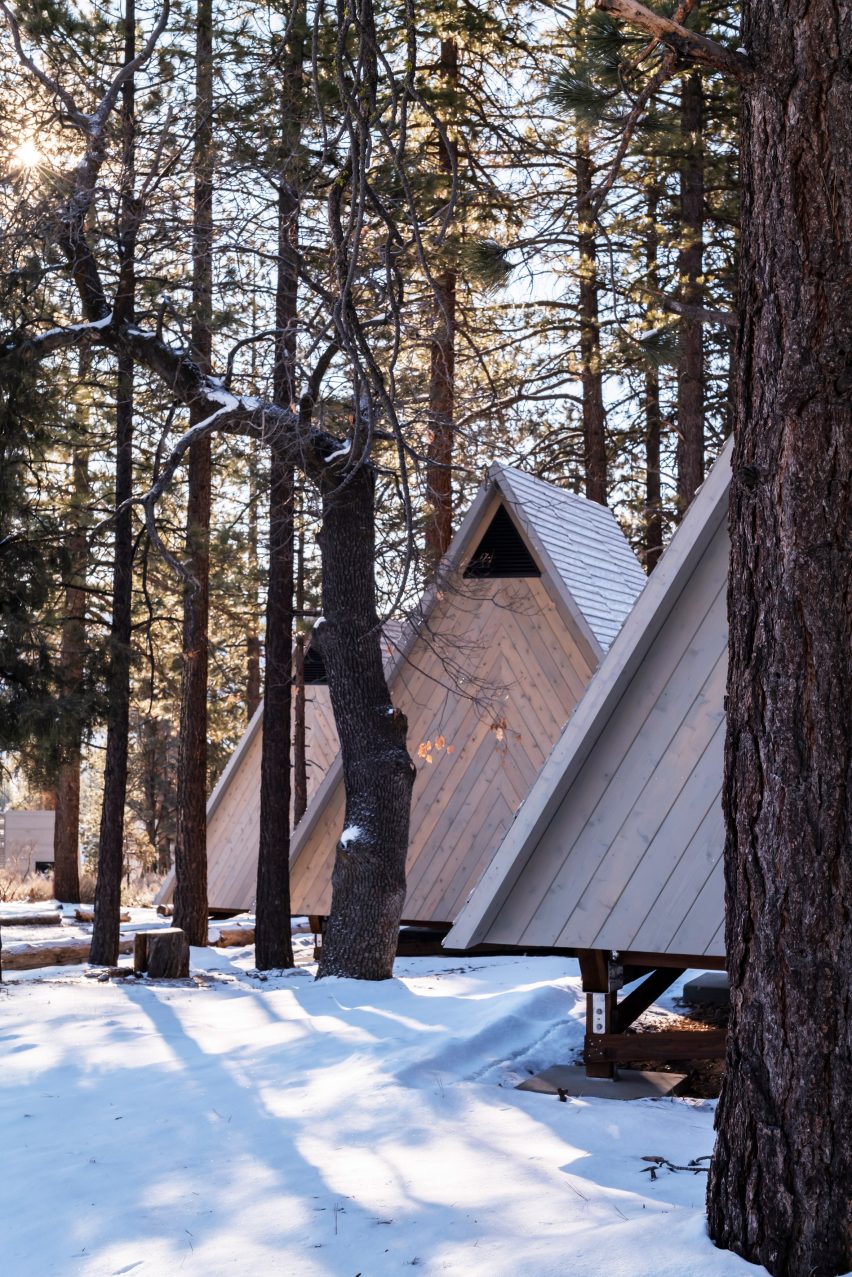
Camp Lakota, USA, by Perkins&Will
Architecture studio Perkins&Will utilised mass timber to create 24 cabins and a 1,022-square-metre dining hall at a Girl Scouts of Greater Los Angeles campground in California.
Each of the cabins at Camp Lakota was made from timber Structural Insulated Panels (SIPs) and supported on a timber frame, while the main hall has a glulam structure.
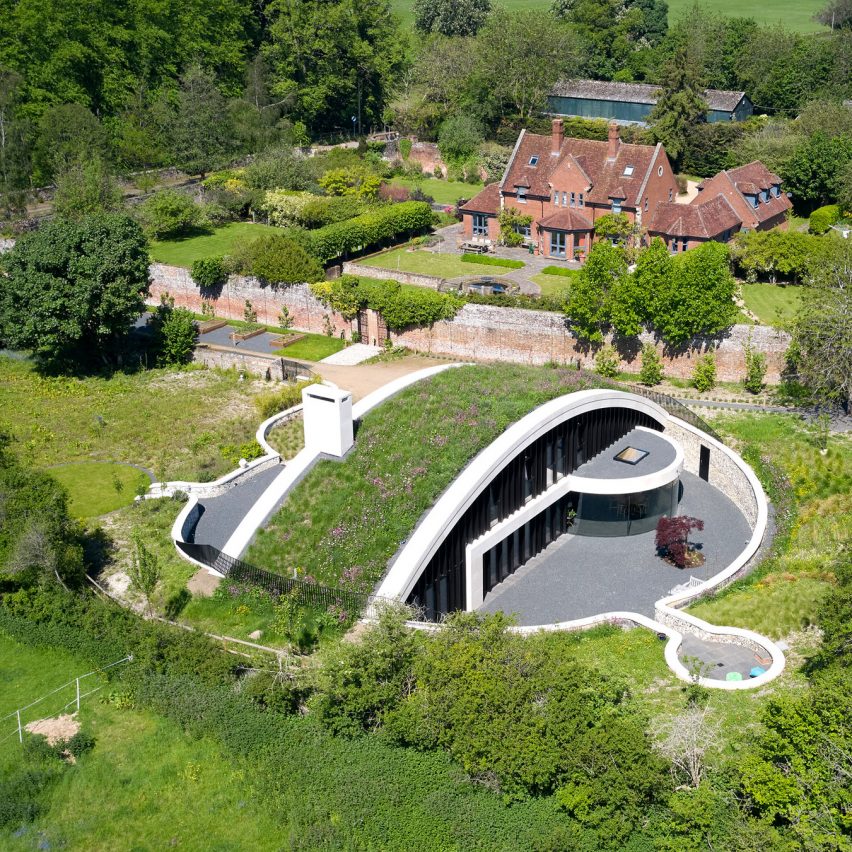
Ashraya, UK, by Kirkland Fraser Moor
The distinctive Ashraya house, built in the Chiltern Hills Area of Outstanding Natural Beauty, is enclosed by a large CLT arch.
Topped with grass, the house was designed to be both contemporary and integrated into the landscape. Along with the timber roof structure, internal walls were built from chalk blocks to reduce the home's environmental impact.
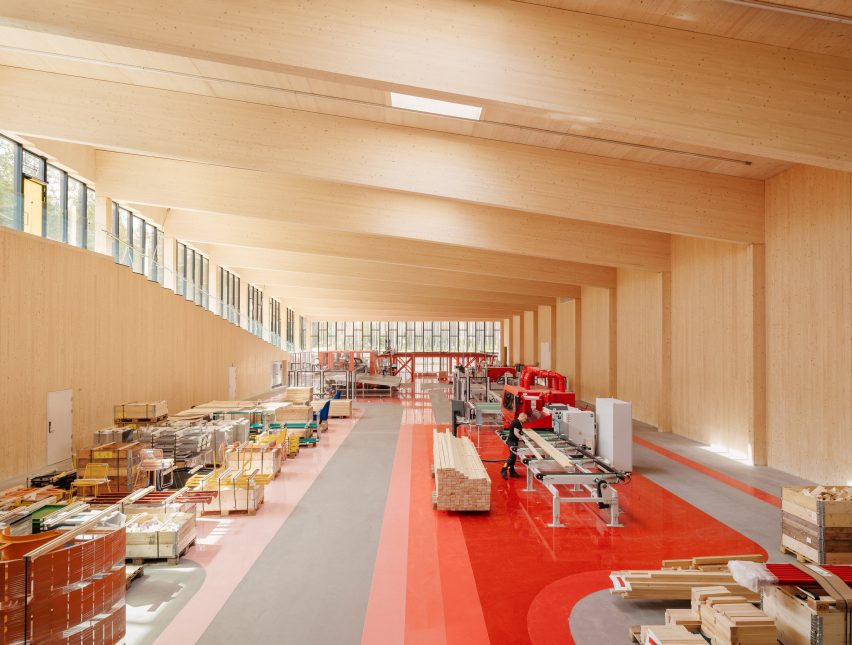
The Plus factory, Norway, by BIG
Set within a Nowegian forest, The Plus factory was designed by Danish studio BIG to be the "world's most environmentally friendly furniture factory" for outdoor furniture maker Vestre.
Built from PEFC-certified cross-laminated timber and glulam, the Passivhaus factory was arranged in four double-height wings radiating out from a central office area that each contain a different stage of the company's production line.
Read more about The Plus factory ›

Hayward Field, USA, by SRG Partnership
Seattle-based architecture firm SRG Partnership added a ETFE canopy supported by a glulam structure to Hayward Field (pictured above and top), which is the track and field facility for the University of Oregon.
The canopy rises from the seating in slightly curved arches as a nod to the forests of the Pacific Northwest.
Read more about Hayward Field ›
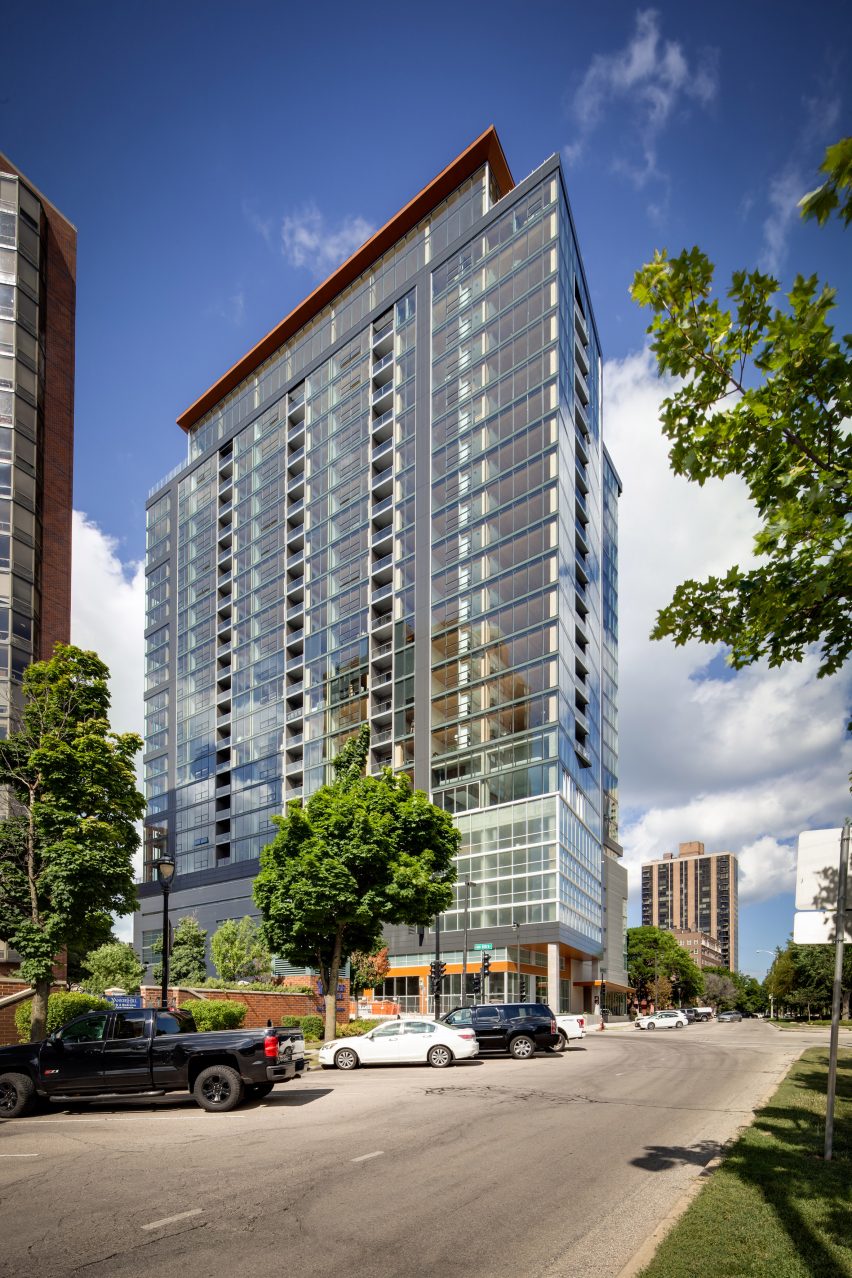
Ascent, USA, by Korb + Associates Architects
At 86.6 metres, the Ascent residential tower in Wisconsin officially became the world's tallest timber building this year. Designed by Korb + Associates Architects, the 25-storey tower has a concrete base, elevator and stair shafts, with the rest of the structure made from CLT and glulam.
The building, which contains luxury apartments on the upper levels and retail on the ground floor, replaced the 85.4-metre-high Mjøstårnet building in Norway as the title-holder.
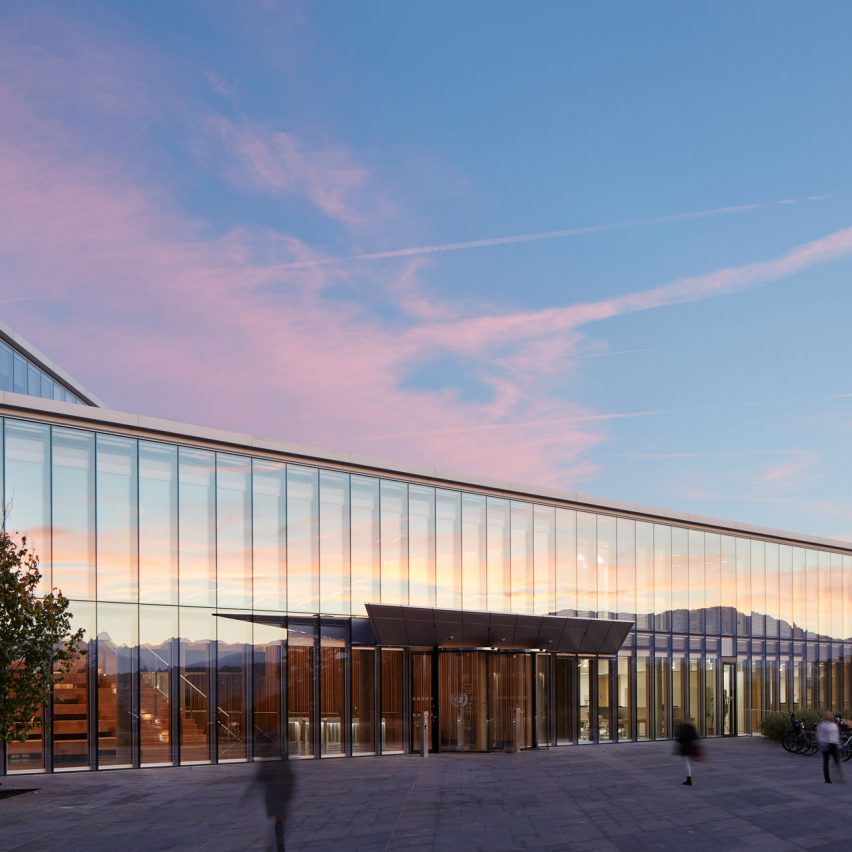
United Nations offices, Switzerland, by Skidmore Owings & Merrill and Burckhardt+Partner
Built on the United Nations campus in Geneva, this 24,000-square-metre hybrid mass-timber and concrete office block was designed by Skidmore Owings & Merrill and Burckhardt+Partner.
Designed to accommodate 1,500 staff, the building was arranged around two diamond-shaped courtyards with large amounts of glazing that provide views across the campus and Lake Geneva.
Read more United Nations offices ›
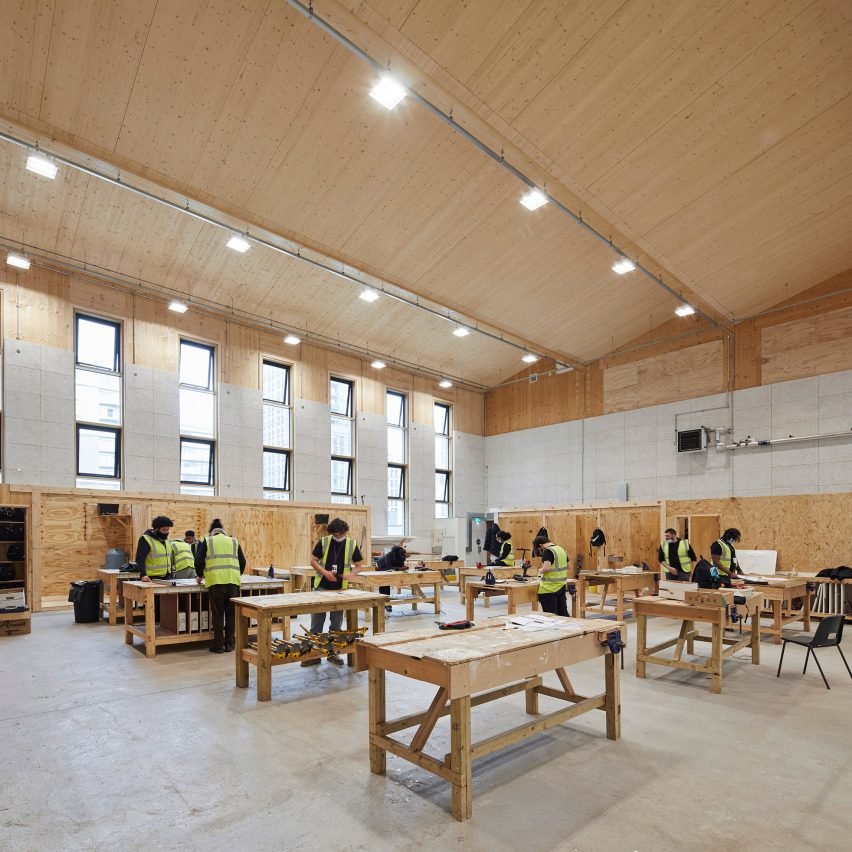
King's Cross Sports Hall, UK, by Bennetts Associates
UK studio Bennetts Associates used a combination of CLT and glulam to create the King's Cross Sports Hall in London, which is currently being used as the Construction Skills Centre.
Built to the north of King's Cross, the sports centre was designed to be a lightweight structure as it is three metres above a railway tunnel.
Read more about King's Cross Sports Hall ›
Dezeen is on WeChat!
Click here to read the Chinese version of this article on Dezeen's official WeChat account, where we publish daily architecture and design news and projects in Simplified Chinese.